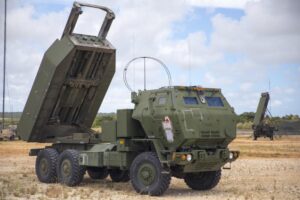
Lockheed Martin on Monday said it tested its DIAMONDShield battle management system in the Navy’s recent Valiant Shield 2022 exercise in the Pacific Ocean near Guam. The ninth Valiant Shield training activity that occurs every other year ended on June 17. It focuses on joint training and multi-domain operation in a blue-water environment among various U.S. forces and this year took place in the Joint Region Marianas, which includes Palau, Naval Base Guam, Andersen Air Force Base, and the Mariana…

 By
By 











